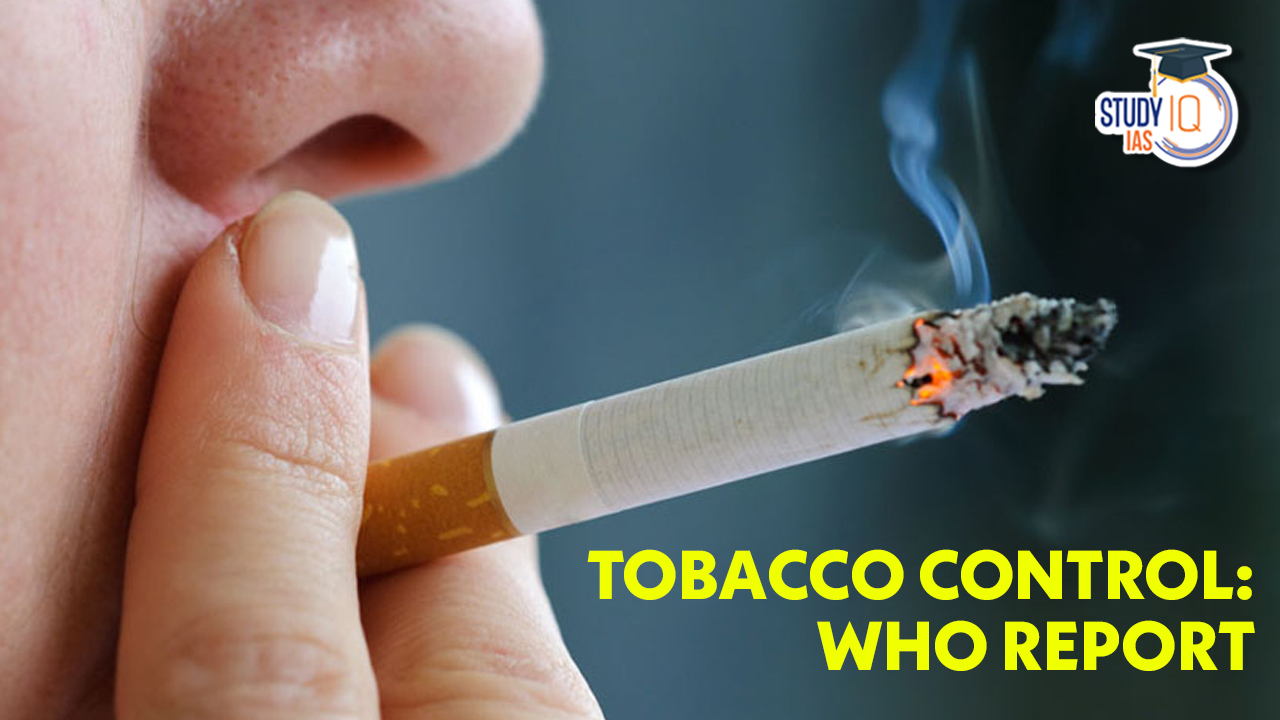Table of Contents
Context: The World Health Organisation (WHO) has released a report on tobacco control measures.
More on News
- This was the ninth WHO report on the global tobacco epidemic which tracks the progress made by countries in tobacco control since 2008.
What are MPOWER Measures?
- In line with the WHO Framework Convention on Tobacco Control (WHO FCTC), WHO introduced the MPOWER measures in 2008.
- MPOWER are a set of six cost-effective and high impact measures that help countries reduce demand for tobacco.
- These measures include:
- Monitoring tobacco use and prevention policies.
- Protecting people from tobacco smoke.
- Offering help to quit tobacco use.
- Warning about the dangers of tobacco.
- Enforcing bans on tobacco advertising, promotion and sponsorship.
- Raising taxes on tobacco.
Key Findings of WHO Report on Tobacco Control
- MPOWER: In the 15 years since the MPOWER measures were first introduced, 5.6 billion people in the world – or 71% of the entire population – remain protected by at least one of the measures. This has increased from just 5% of the population in 2008.
- Countries Implementing MPOWER Measures: The number of countries implementing at least one MPOWER measure has increased from 44 countries in 2008 to 151 in 2022.
- At least four countries – Brazil, Turkiye, Netherlands, and Mauritius – have implemented all the measures.
- However, there are at least 44 countries in the world that still do not implement any MPOWER measure.
- E-cigarettes: The tobacco industry is aggressively promoting E-cigarettes as a safer alternative to cigarettes which is undermining the progress made on tobacco control.
- E-cigarettes are harmful to both the people using them and those around them, especially when used indoors.
- Curbing Second-hand Smoking: The report focuses on controlling second-hand smoking (being in the presence of someone who is smoking) by creating smoke-free public areas and also de-normalising the act of smoking in the society.
- Of the estimated 8.7 million tobacco-related deaths each year, 1.3 million are of non-smokers exposed to second-hand smoke.
- Moreover, severe asthma, respiratory tract infections, and sudden infant death syndrome are more common among children exposed to second-hand smoke.
Where Does India Stand?
- The report states that India has the highest level of achievement when it comes to putting health warning labels on tobacco products and providing tobacco dependence treatment.
- With 85% of cigarette packs carrying health warnings both on the front and back, India figures among the top 10 countries in terms of the size of health warnings.
- The cigarette packets in the country also carry a toll-free number for a quit line.
- India has also banned the sale of e-cigarettes and banned smoking in healthcare facilities and educational institutions.
Initiatives taken by India for Tobacco Control
- National Tobacco Control Program (NTCP): India established the NTCP to implement tobacco control strategies at the national, state, and district levels.
- It focuses on awareness generation, capacity-building, and strengthening enforcement mechanisms.
- Warnings on OTT Platform: India is also implementing warnings on OTT platform content when actors are seen using tobacco products. This would make India the first country in the world to do so.
- Cigarette and Other Tobacco Products Act (COTPA) 2003: It regulates the advertisement, promotion, and sponsorship of tobacco products, prohibits smoking in public places, mandates pictorial health warnings on tobacco product packaging, and sets rules for the sale of tobacco products to minors.
- Pictorial Health Warnings: India has implemented prominent and graphic pictorial health warnings on tobacco product packaging.
- Ban on Smoking in Public Places: COTPA prohibits smoking in public places, including indoor areas, workplaces, and public transportation.
- Tobacco Taxation: The Central government has periodically increased taxes on tobacco products to make them less affordable and discourage consumption.
Way Forward
- The report shows that slowly but surely, more and more people are being protected from the harms of tobacco by WHO’s evidence-based best-practice policies.
- Also, all countries should put in place all the MPOWER measures at best-practice level to fight the tobacco epidemic.


 DRDO and Air Force Successfully Test Ind...
DRDO and Air Force Successfully Test Ind...
 IB ACIO Recruitment 2025 Notification Ou...
IB ACIO Recruitment 2025 Notification Ou...





















